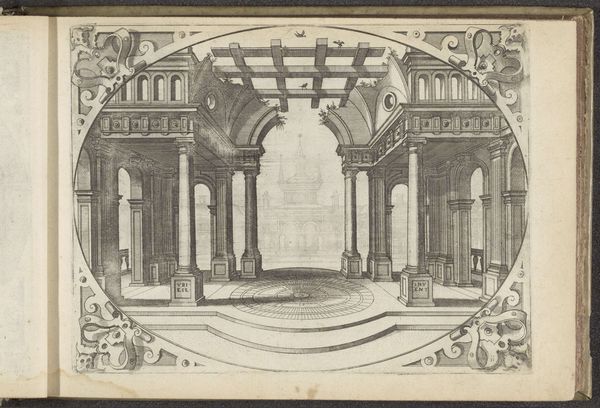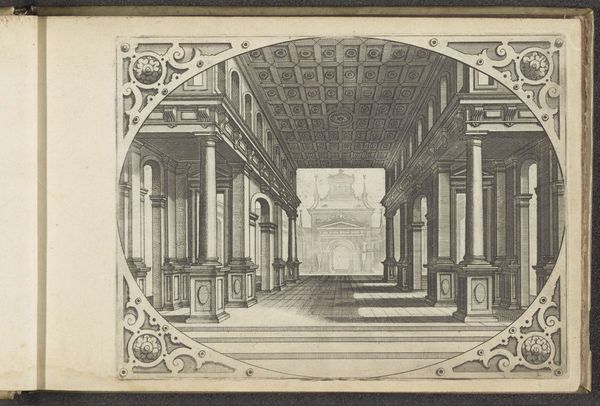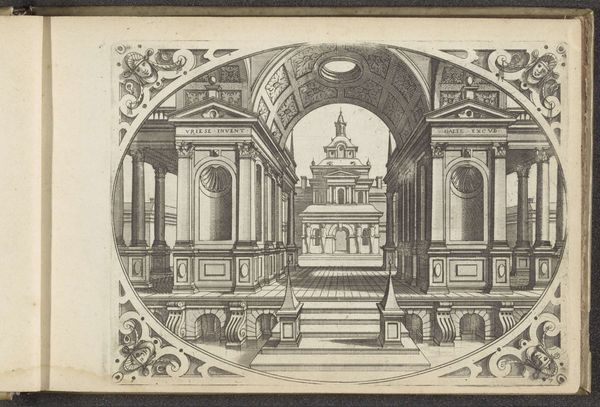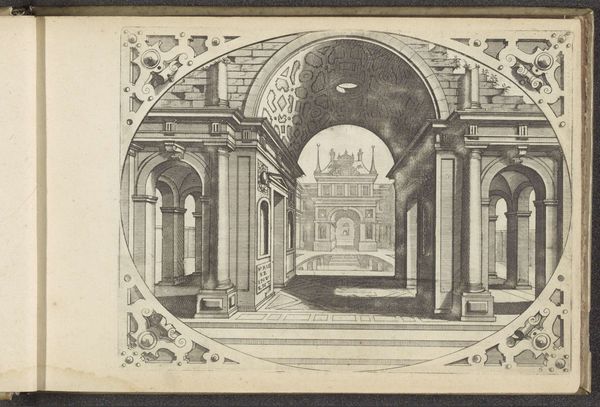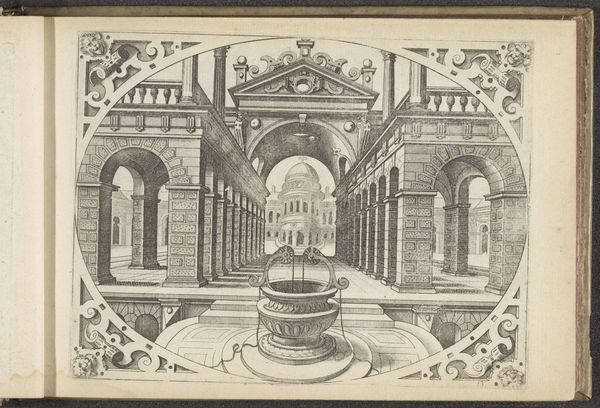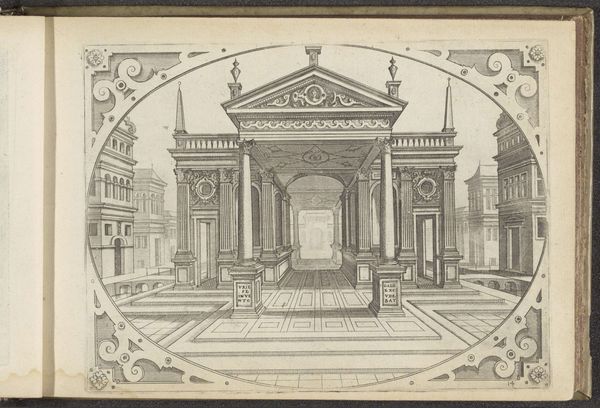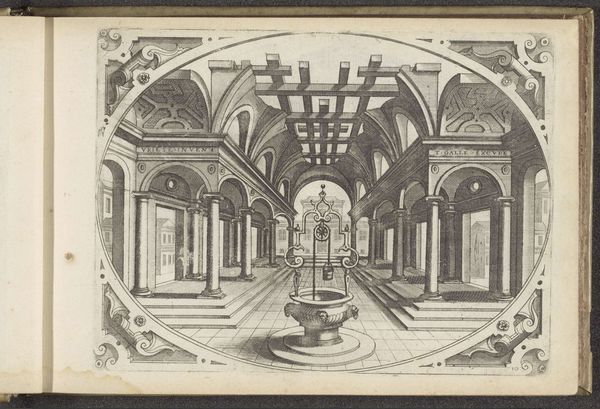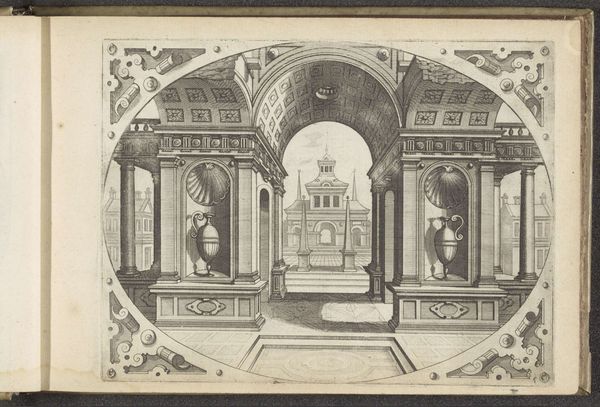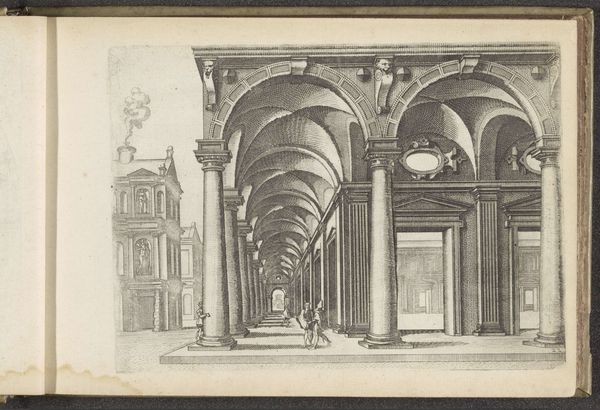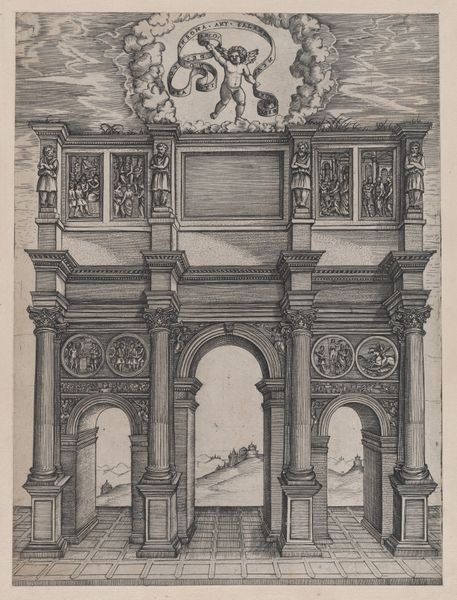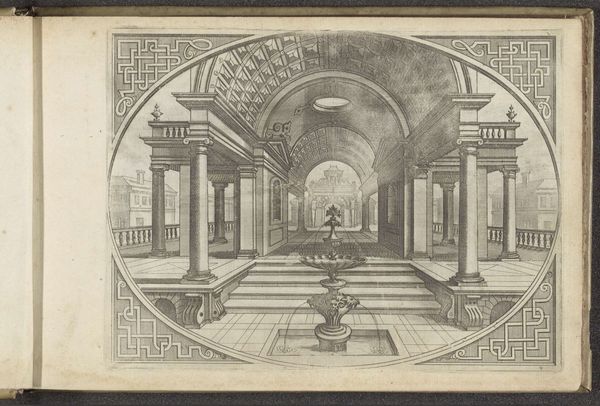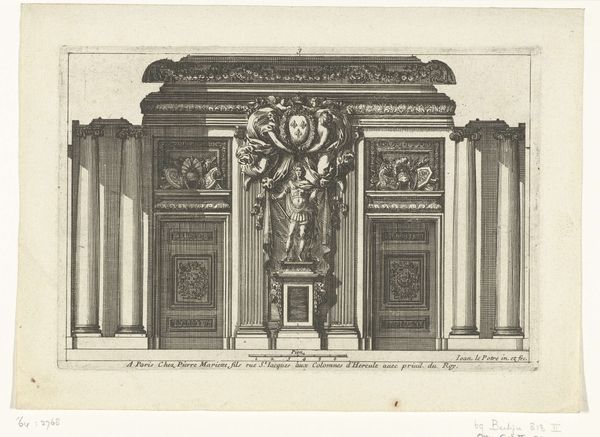
Geruïneerde portiek met daaronder een fontein 1560 - 1601
0:00
0:00
johannesoflucasvandoetechum
Rijksmuseum
drawing, intaglio, paper, ink, pen, engraving, architecture
#
drawing
#
pen drawing
#
intaglio
#
paper
#
11_renaissance
#
ink
#
geometric
#
pen
#
cityscape
#
engraving
#
architecture
Dimensions: height 164 mm, width 214 mm
Copyright: Rijks Museum: Open Domain
Curator: It looks… unfinished, like a dream mid-construction. There's a melancholy to all that precise line work. Editor: We’re looking at “Ruined Portico with a Fountain Below” by Johannes or Lucas van Doetechum, created sometime between 1560 and 1601. It’s an ink drawing, specifically a pen drawing and engraving, using intaglio on paper. And you're right, there's a curious tension between ruin and design. Curator: The ruin, yes! It’s so controlled. Each crumbling piece rendered with incredible care. Is it supposed to be commentary, perhaps, on the impermanence of even the grandest ambitions? It’s hard to believe in a space designed to erode itself. Editor: Renaissance artists were fascinated by classical architecture and its relationship to power. Often, these "ruins" were imagined or idealized reconstructions. But there is an element of that interest intersecting with period philosophical questions regarding decline and societal entropy that became more explicitly a trope of representation across artwork following plagues or military losses and the reconfigurations of societal strata that resulted from them. The precise draftsmanship, though, reminds you that it’s still trying to evoke this idealized vision of human perfectability. Curator: But see how the light pools, the cool shadows deepen where the ink is thickest! I imagine it hushed and damp, the gentle echo of water trickling from the fountain. Even ruined, there's this invitation to quiet contemplation. Editor: The architectural elements themselves reinforce that sense of invitation but also hierarchy: the columns, the vaulted ceilings, they denote power and order, but there's a democratizing gesture implicit in this "ruin." The breakdown of structural integrity offers, at least on its surface, a more immediate and unvarnished interaction between an occupant and a previously austere architecture that can now more actively be touched and integrated into everyday experiences beyond official public events, etc. What a powerful negotiation in aesthetics and political messaging! Curator: Right. Still, I'm haunted by this notion of deliberate decay. It feels strangely… prophetic. Editor: Maybe that’s its power— this space holds both a history of striving and a vision of what might be. Thanks for unpacking that perspective. Curator: And thank you for the crucial context that expands our reading of such spaces beyond simple melancholy.
Comments
No comments
Be the first to comment and join the conversation on the ultimate creative platform.
